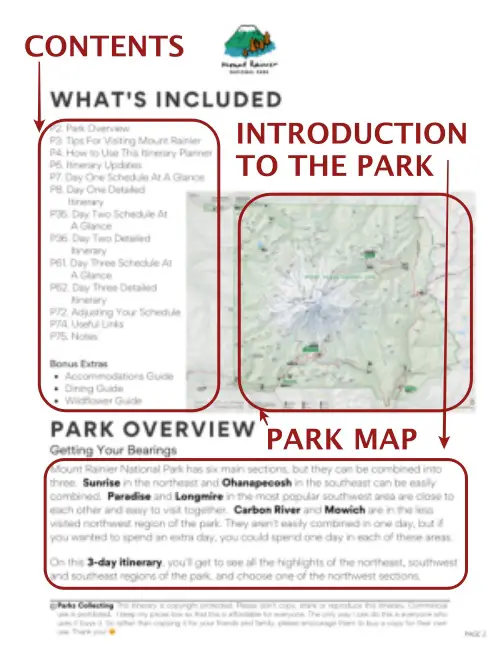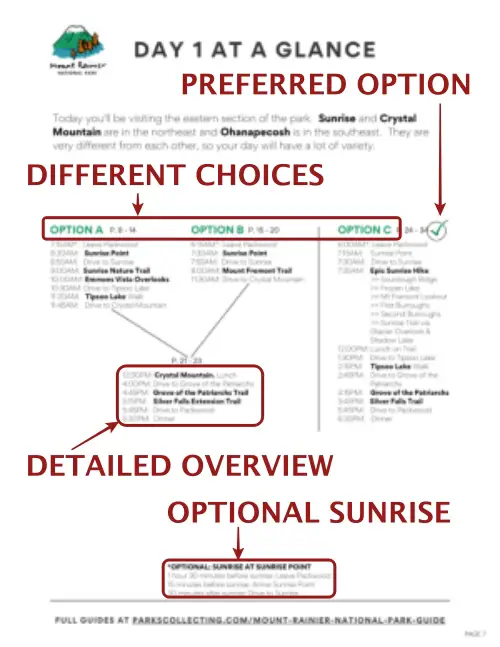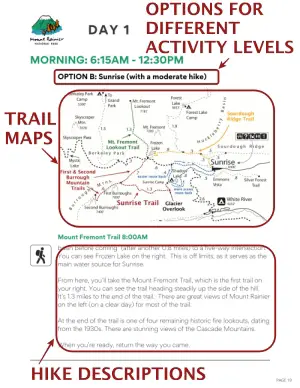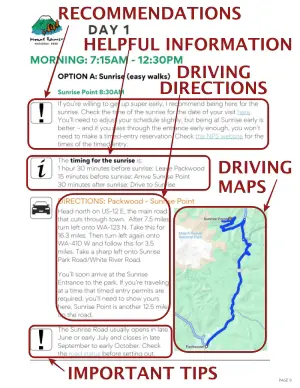If you’re planning a trip to Mount Rainier National Park, chances are you’ve got a long list of things to figure out – where to stay, which entrance to use, how much time you’ll need, and when to go.
But there’s something most guides won’t tell you: the mistakes that could throw off your whole Mt. Rainier visit.
That’s what this guide is for.
I’ve explored every major area of Mount Rainier – Paradise, Sunrise and Ohanapecosh – and learned (sometimes the hard way) what works and what doesn’t. I’ve seen plenty of travelers make the same avoidable errors – wrong entrance, bad timing, unrealistic hiking plans – and I’ve made a few myself.
This guide is for people planning their first (or second!) Mt. Rainier trip who want to avoid the frustration of showing up to road closures, full parking lots, or missing the best views because of fog.
Want a quick teaser? One of the biggest mistakes is underestimating how massive and spread out the park really is- driving between sections can eat up hours.
So if you want to get the most out of your time going to Mount Rainier National Park, let’s walk through the 7 key mistakes to avoid when planning your trip.
Watch these 7 mistakes to avoid when planning a trip to Mount Rainier National Park on video:
🔔 You can also watch this video on YouTube directly (opens in new tab).
🎙️ Or listen as a podcast:
🛏️TOP HOTEL PICK: Check availability now
🚘FIND THE CHEAPEST CAR RENTAL: Search Discover Cars for the best deals
✈️FIND THE CHEAPEST FLIGHTS: Search Skyscanner for the best deals
🧳GET TRAVEL INSURANCE: Get insured with Travelex before you go
📱TAKE AN AUDIO TOUR: Buy an audio tour now
Table of Contents
#7 Getting a late start each day
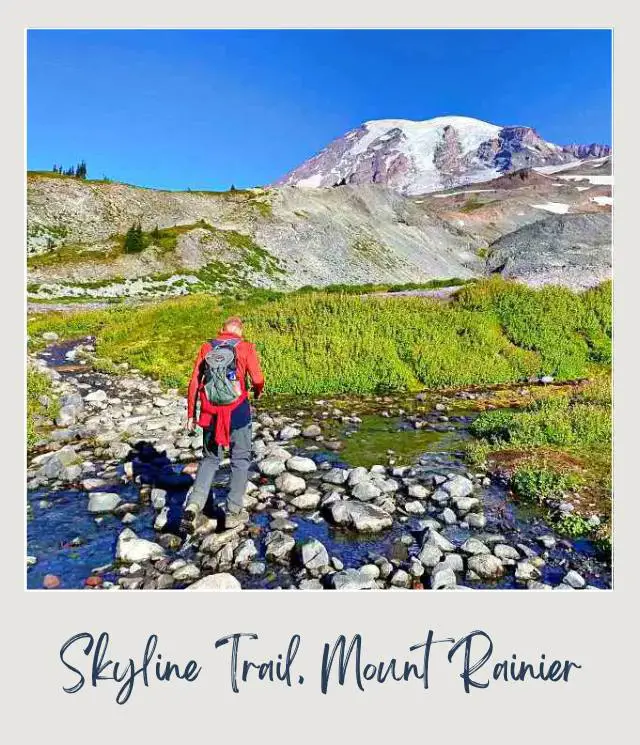
If you get to Mount Rainier too late in the day, you will regret it! The parks get very crowded here in the short summer season. Getting to the national park early in the morning will ensure that you have it mostly for yourself. Getting in early maximizes your chances of avoiding lines at the entrance stations and getting a good parking spot.
Another reason you should get here early is the trails. There’s nothing more peaceful than walking alone in the woods or mountains. During the summer months, the trails here can get pretty packed. An early start to your day will allow you to see the viewpoints without all the selfie sticks and other tourists.
Also, if you want the best reflection of Mount Rainier in the many lakes around the park, then morning is the best time to do this. In the morning, the wind is usually calmer than it is in the afternoon, which gives you a perfect reflection of the mountain. The best lake in the park for a reflection photo is the Reflection Lakes. They are right off Stevens Canyon Road and are easily accessible, but this road is only open in the summer.
Subscribe to daily national parks planning tips, travel inspiration and trip ideas and get instant access to the free PDF of this guide:
“7 Mistakes to Avoid When Planning a Trip to Mount Rainier National Park”
#6 Not getting reservations in summer

With the high number of visitors that this park has been getting in the past few years, the NPS have had to implement a reservation system. This means that you’ll need a reservation if you want to visit the Paradise section of the park from late May to early September or the Sunrise section of the park from early July to early September.
To purchase your tickets, you can go to Recreation.gov and book your reservations depending on what time of year you want to visit the Park.
If you make this mistake and don’t make a timed entry reservation, you can still visit – you’ll just need to enter before 7:00 AM or after 3:00 PM.
The other option if you want to avoid the crowds and see the park on your terms is to visit during the shoulder season. Fall is a great time to visit because the snow will still be melted and the fall foliage here is amazing! Sure, it’ll be a little colder and you’ll miss the summer wildflowers, but if you want fewer people and not have to worry about reservations, then this is a great time to go.
➡️ READ MORE: National parks that require reservations: the low down
#5 Not hiking

The best way to see this amazing national park is by hiking it. There are over 240 miles of trails that lead to beautiful waterfalls, breathtaking viewpoints, and green forests.
If you have mobility issues, then just driving is fine. There are still several viewpoints you can see around the park by car. However, if you can hike, you’ll be able to see so much more. Just a few of the things you’ll be able to see are Mt. Rainier from different angles, glaciers, and fields of wildflowers.
Some of the best Mount Rainier lookout hikes in the park include the Skyline Loop, Mount Fremont Lookout Trail, and Tolmie Peak Trail. These hikes all have amazing views of Mount Rainier that you can’t get from a car.
If you are looking for glaciers, then try the Glacier Basin Trailhead Hike. This 7-mile hike will take you up to the largest glacier in the 48 contiguous United States, Emmons Glacier.
The best hiking trail for wildflowers is the Grand Park via Lake Eleanor Trail. It’s a 9-mile out-and-back hike that will take you to the largest meadow in the park, which has colorful flowers and stunning views.
READ MORE:
➡️ 20 Best Hikes in Mount Rainier National Park
➡️ Hiking The Skyline Trail Mt Rainier National Park
#4 Just visiting Paradise
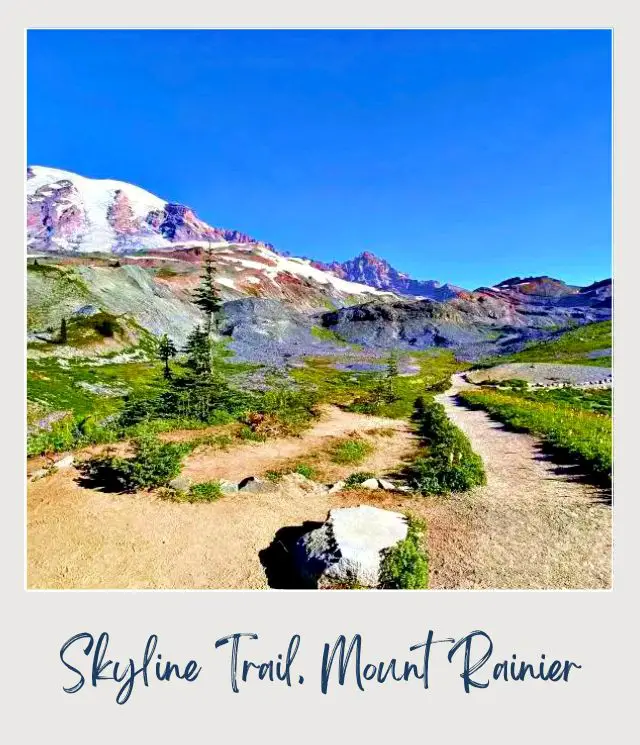
When people come to Mount Rainier National Park, they usually will only visit Paradise. Sure, this is a beautiful part of the park with its wildflowers and mountain views, but there are lots more places to see.
First off is Sunrise. One of the main roadside attractions in this section of the park is Sunrise Point. This viewpoint is off the main road and easy to get to. If you are looking for hikes in this part of the park, there are lots to choose from. Some of the most notable are Sunrise Nature Trail, Emmons Vista Overlooks, and Summerland Trail. To get to Sunrise, use the Northeast Entrance of the Park.
Then there’s Ohanapecosh which means “water’s edge” in the Taidnapam Indian language. Some of the best drive-up locations here are the Reflection Lakes and Inspiration Point, which both give you incredible views of Mt. Rainier. For hikes, there’s the Silver Falls Trail, Indian Bar Trail, and the Three Lakes Trail.
Lastly, we have Mowich Lake and Carbon River in the north part of the park. This section of the park is much less visited and more remote than the other sections of the park.
Mowich Lake is the largest and deepest lake in the park and is only open in the summer to early fall months. It can be reached via State Route 165 but the road is unpaved after the first three miles and might be difficult to drive for some cars.
Carbon River is reached via the Carbon River Road, off of State Route 165, but the last section of this road you will have to hike or bike in. In this part of the park, you can find the Carbon Glacier and the river that runs from it.
#3 Ignoring the weather
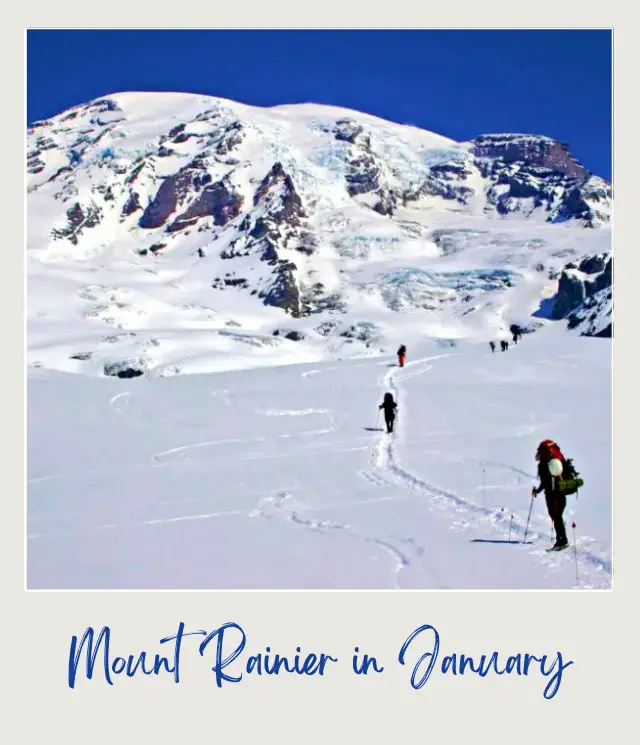
You also will need to know what the weather will be like before you go. It’s a mistake to not know what the weather is likely to be and adjust your plans around the weather if possible.
Mount Rainier is often covered in clouds, so going there and not being able to see the thing that the park is named after is disappointing. You may not be able to change your trip to fit the weather, but if you can, check the weather and adjust to try and have sunny, clear days. Your best bet is to go during the summer months for the best temperatures and blue skies.
However, the summer is short and trails can be covered in snow even in July. Make sure to keep an eye on road closures and trail openings throughout the year and book your trip accordingly.
Once your trip has started, there is not much you can do if the weather is bad, but there are some things you can do to make your trip more enjoyable. Even if the weather is so bad on your trip that you don’t see Mt Rainier a single time, there are tons of waterfalls and forest hikes to do that will keep you entertained for days. Just always check the weather and adjust your plan for bad weather where possible.
#2 Not also visiting Olympic National Park
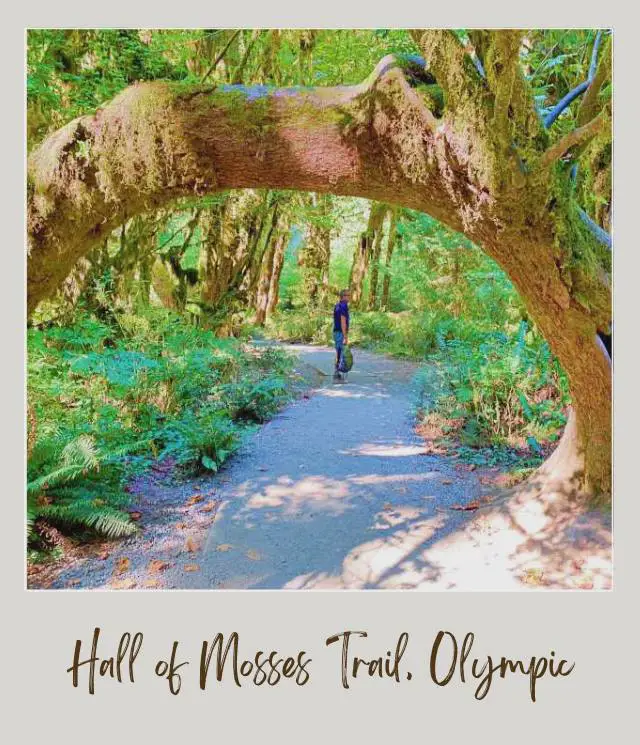
Since you’ll be in the Pacific Northwest, it is a real mistake to miss out on nearby Olympic National Park on the same trip.
If you are able to extend your vacation by an extra few days, then I would really recommend visiting Olympic National Park too. It’s is known for its glacier-capped mountains, rainforests, and beaches. I mean, it really does have everything.
Rainier and Olympic are only a 2.5-hour drive apart and are both about a 2-hour drive from Seattle, so it’s easy to add Olympic to your Mt Rainier visit.
➡️ READ MORE: Olympic National Park Guide
#1 Not having a detailed (and flexible) plan
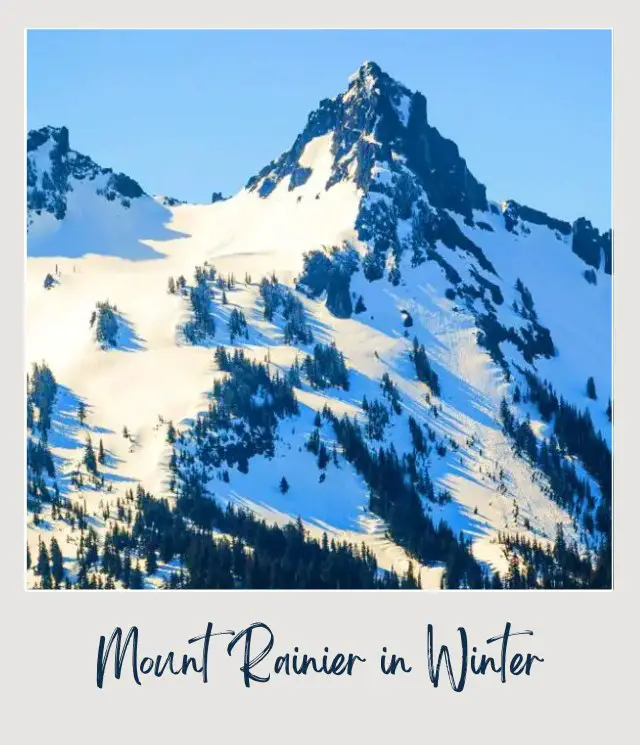
With Mount Rainier being so popular and with so many things to do, having a plan is essential. This is not a park where you can drive in and figure it out as you go.
When planning a trip to Mt Rainier, you need to involve hiking, driving, and any activities that you like doing, like fishing or biking. Once you have figured out the things you want to do on your Mt Rainier trip, you can start researching the exact names and locations of the hikes, viewpoints, and other excursions. Make sure to have a flexible plan with lots of backup ideas as well because you never know if there will be road closures, bad weather, or if the places you were looking at are overcrowded.
I would recommend that you spend at least two days visiting the three major sections of the park, Paradise, Sunrise, and Ohanapecosh. If you have more days, then you can add on Mowich Lake and Carbon River.
➡️ Check out my detailed Mount Rainier National Park Itineraries if you want some help with your itinerary planning.
Travel Insurance for Mount Rainier National Park
You should have good travel insurance when you visit Mount Rainier National Park.
Good travel insurance also covers things like medical expenses, lost or stolen property, trip cancellation, and emergency repatriation.
Of course, not all insurance coverage is equal and you need to check the policy very carefully to see what is – and isn’t – covered. If you want to learn more about all this, check out my Guide to Buying Travel Insurance (on my other website) before getting your insurance.
➡️ A great insurance option is Travelex. You can compare Travel Insurance plans here or get a quote right now:
Additional Planning Resources for Mount Rainier National Park
⭐ Mount Rainier National Park Guide
⭐ Mount Rainier National Park Itineraries
⭐ 10 Tips For Visiting Mount Rainier National Park
⭐ How many days in Mount Rainier National Park do you need?
⭐ Best Hikes in Mount Rainier National Park
⭐ The Skyline Trail Guide
⭐ How To Get to Mount Rainier National Park
⭐ All the Airports Near Mount Rainier National Park
⭐ The Closest Airport To Mount Rainier National Park
⭐ Best Time To Visit Mount Rainier National Park
⭐ Visiting Mount Rainier National Park: What To Expect Throughout the Year
⭐ 10 Fun Facts About Mount Rainier National Park
Enjoy your trip to Mount Rainier National Park? Do you have any other mistakes to avoid when visiting Mt Rainier National Park? I’d love to hear about them. Join my private Facebook group National Parks Collectors and comment and let me know (you can also pick up extra planning tips, share your photos and stories with other national park lovers and more).
Subscribe to daily national parks planning tips, travel inspiration and trip ideas and get instant access to the free PDF of this guide:
“7 Mistakes to Avoid When Planning a Trip to Mount Rainier National Park”
If you liked this article, Pin It to your Mount Rainier National Park board!
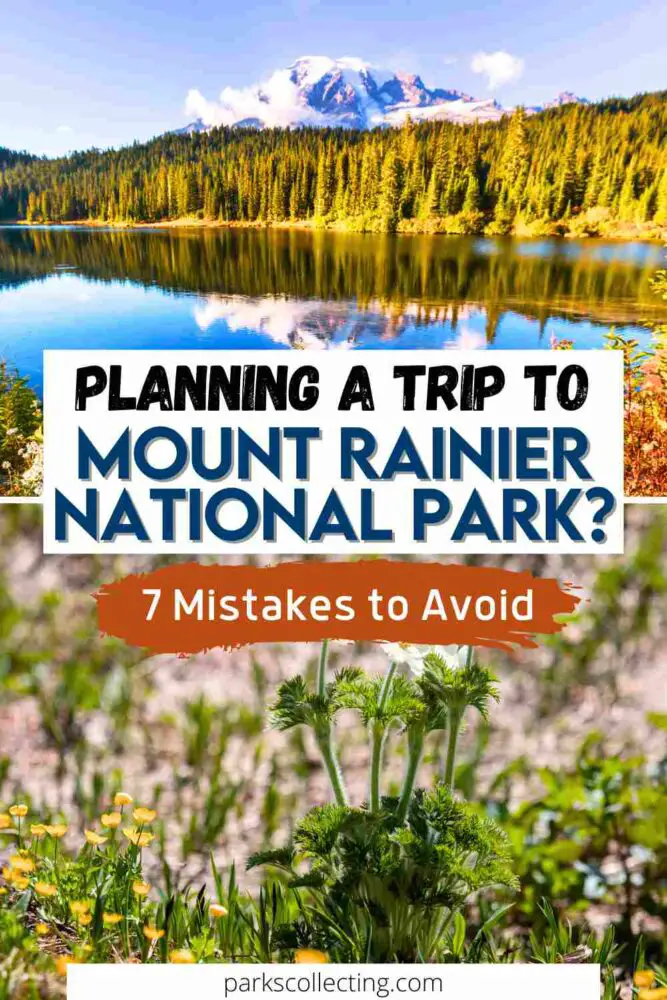
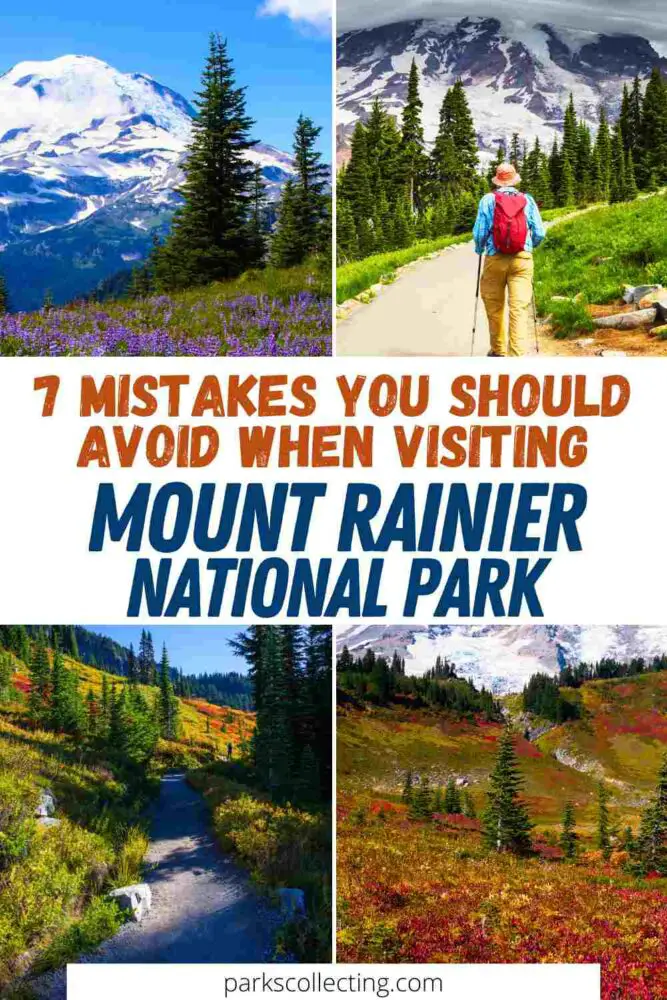
💡 Are you just starting to think about taking a national parks trip? Get Inspiration
‼️ Are you looking for helpful tips for visiting US national parks? Read articles that share useful tips on a range of national-park related issues
💻 Are you starting to plan a trip to Mount Rainier National Park? Read my Guide to Mount Rainier National Park
📋 Do you want a ready-made super detailed plan for your trip to Mount Rainier? Get a detailed 1 – 3-day Mt Rainier National Park Itinerary
💲 Are you ready to book your trip? Use these Planning and Booking Resources
📖 Do you want to read a book about US national parks? Check out my Recommended Reading Lists
About the Author
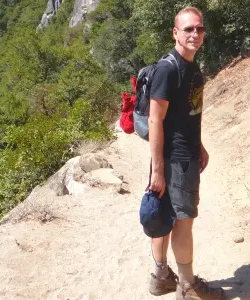
James Ian is a national park, camping and hiking expert.
He has dedicated his life to travel, visiting more than 80 countries, all 7 continents and most of the national parks in the United States. With over 35 years experience in the travel industry, James has worked on cruise ships, at resorts and hotels, and as a travel planner who’s helped hundreds of people plan successful trips to US national parks.
Based on his experience visiting our national parks multiple times, in-depth research and expertise as a travel planner, James has published detailed itineraries for many of the major national parks in the US. These itineraries, as well as in-depth park guides, and other resources will help you have your own incredible trip to US national parks without stress and hassle.
As a national park expert, James has contributed to many publications, including USA Today, Newsweek, Time Business News, Savoteur, Best Trip, and Wired.
I’m a member of the Amazon Services LLC Associates Program. As an Amazon Associate I earn from qualifying purchases.

